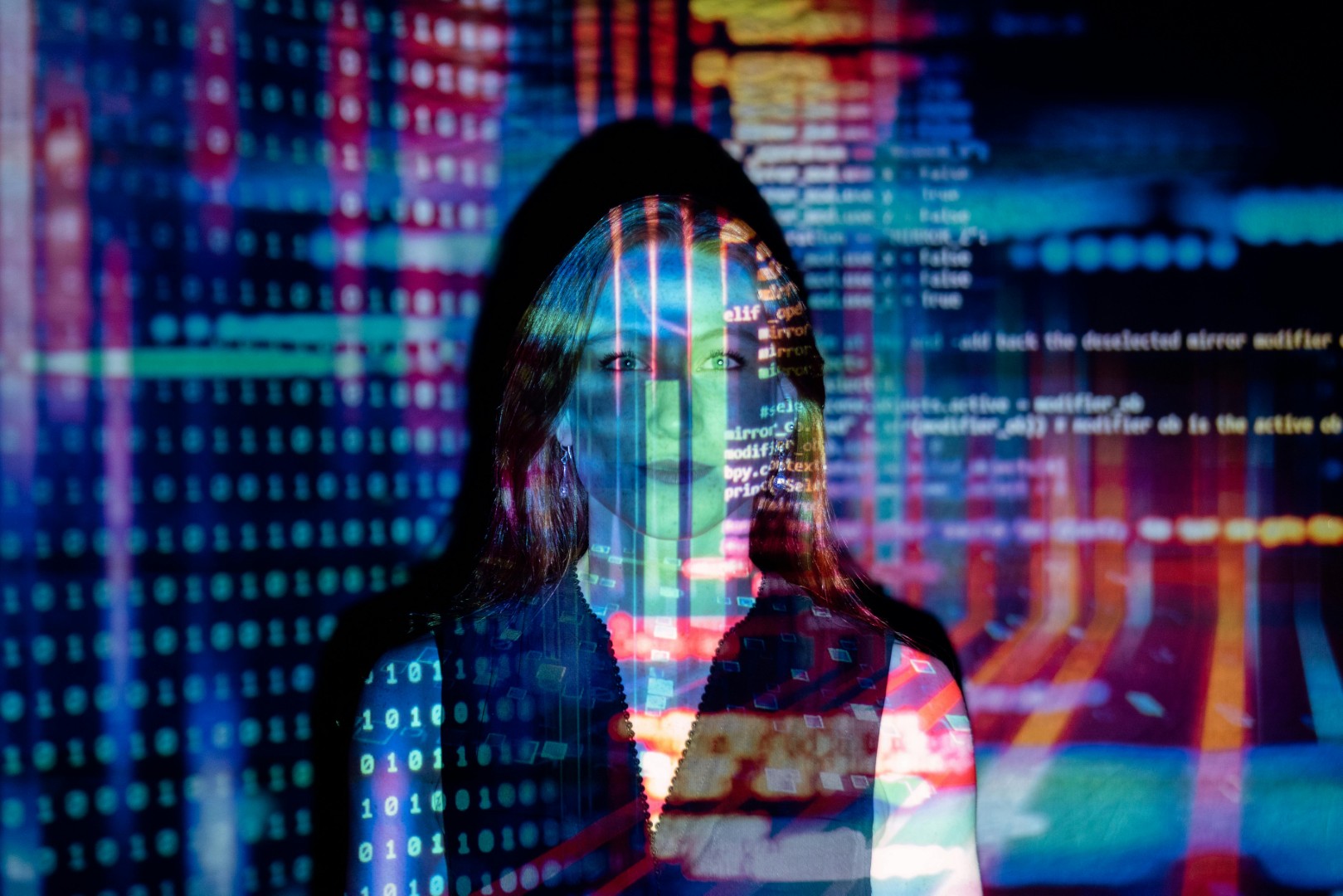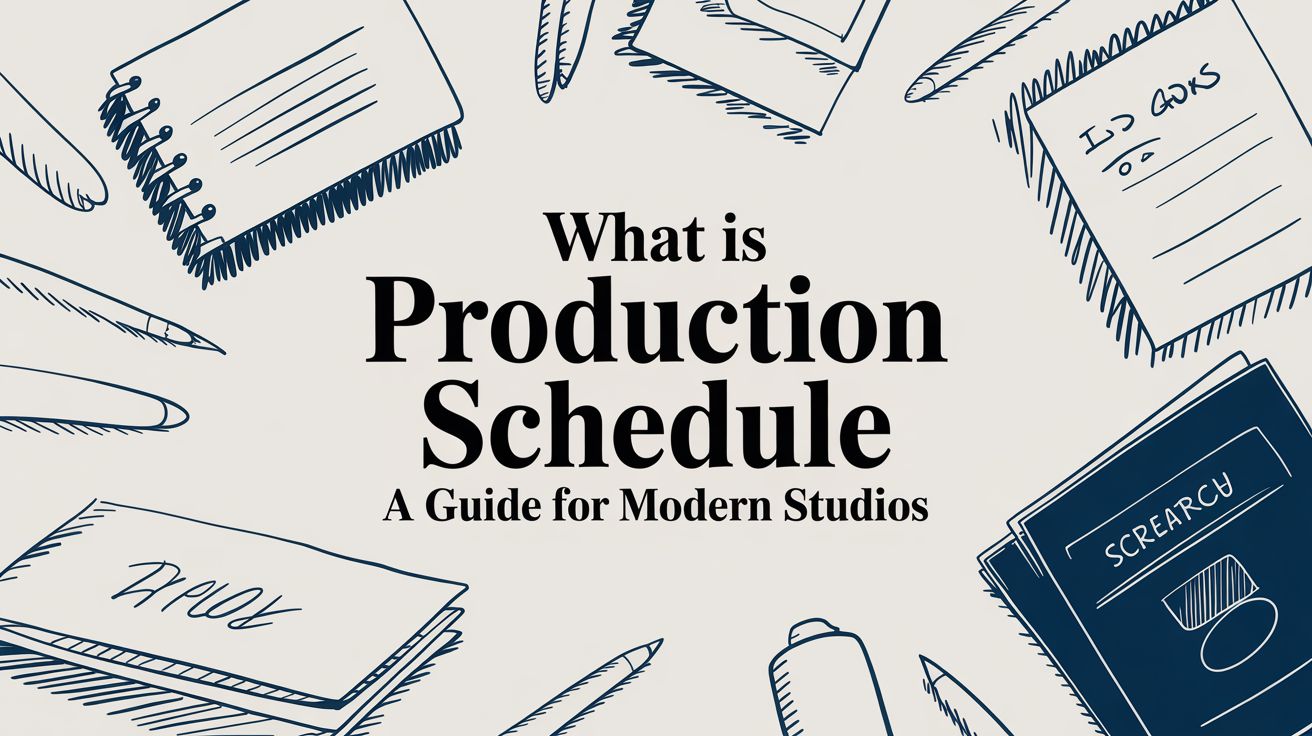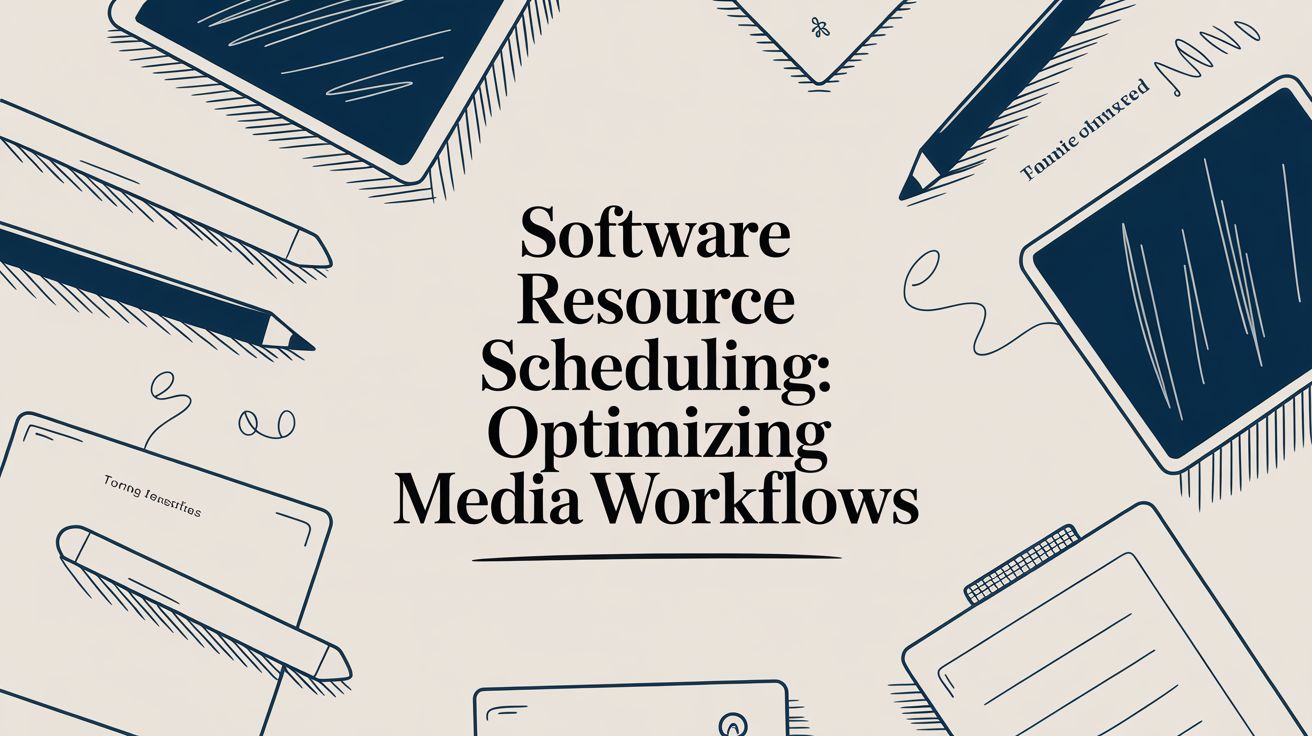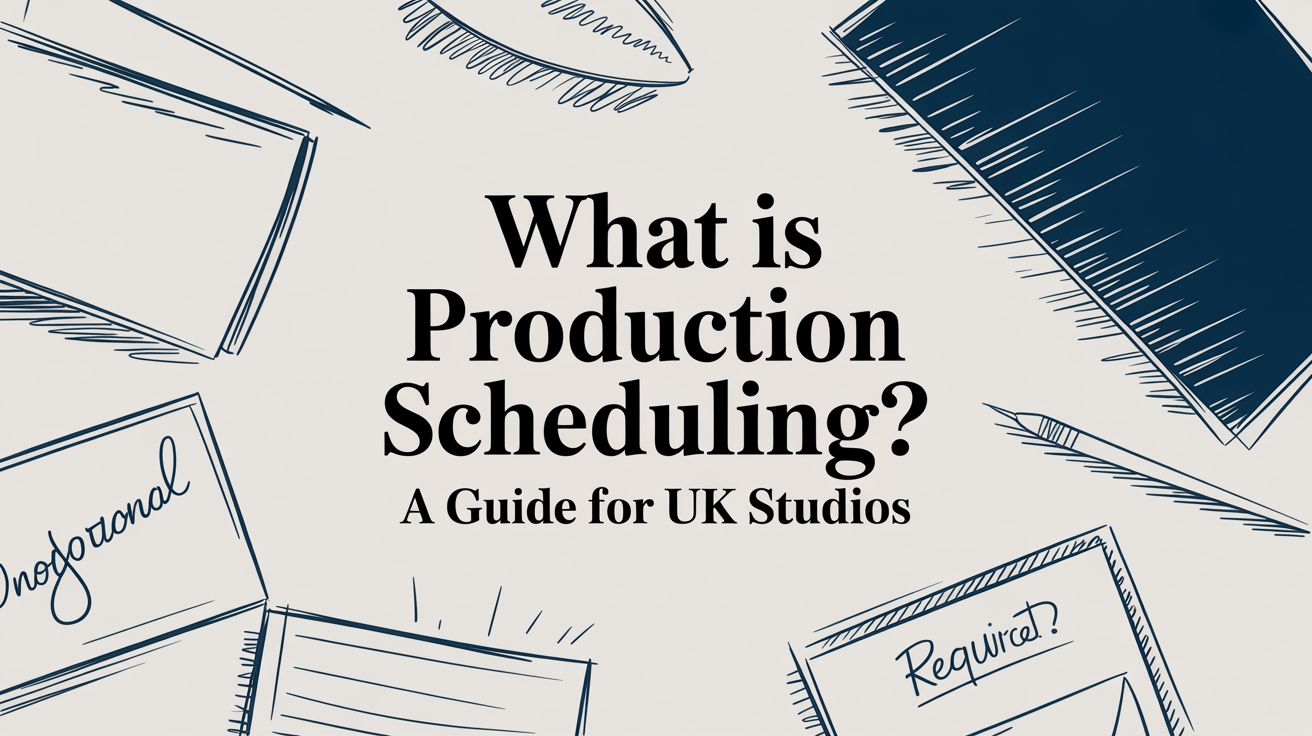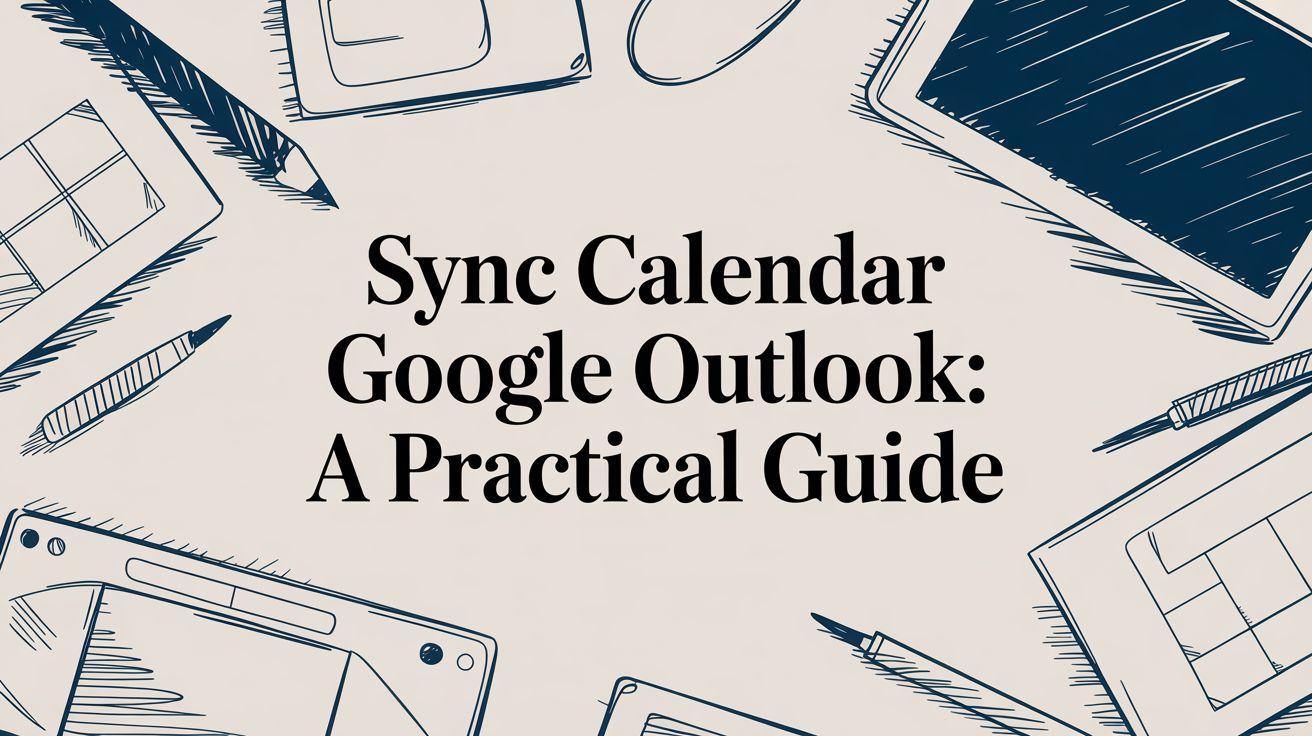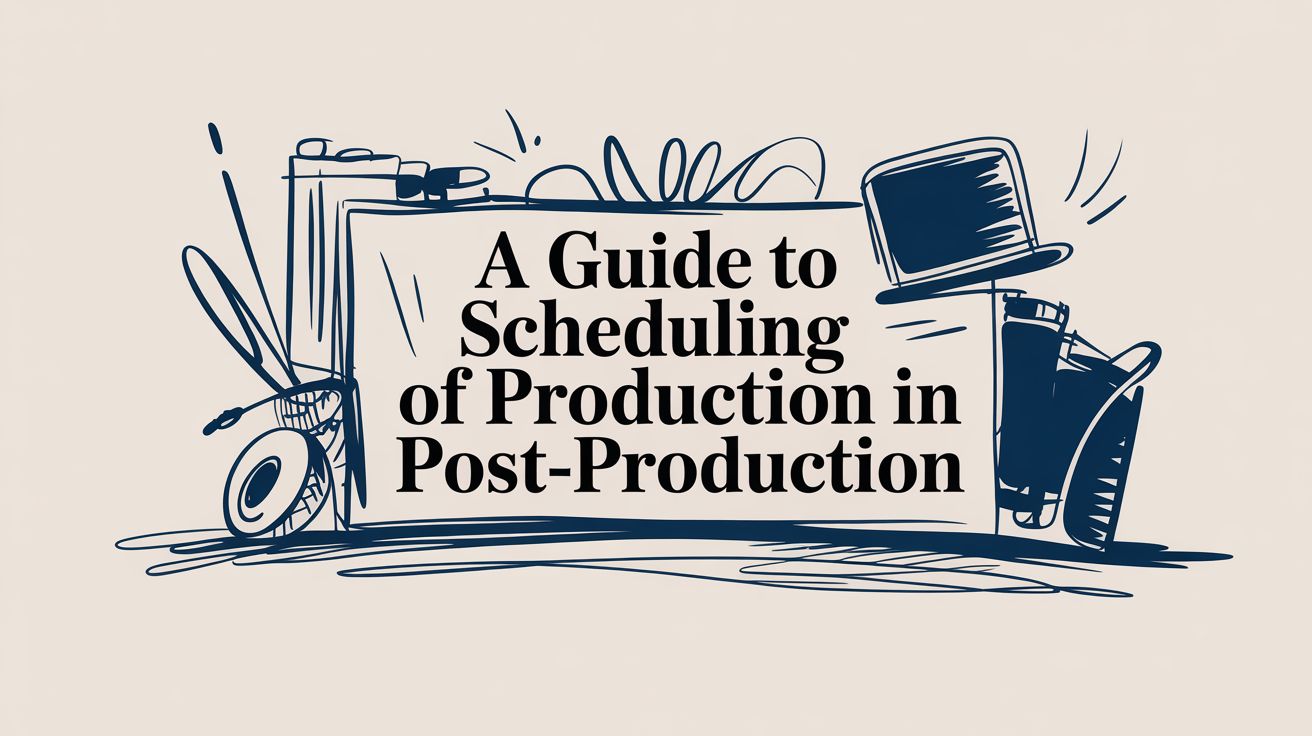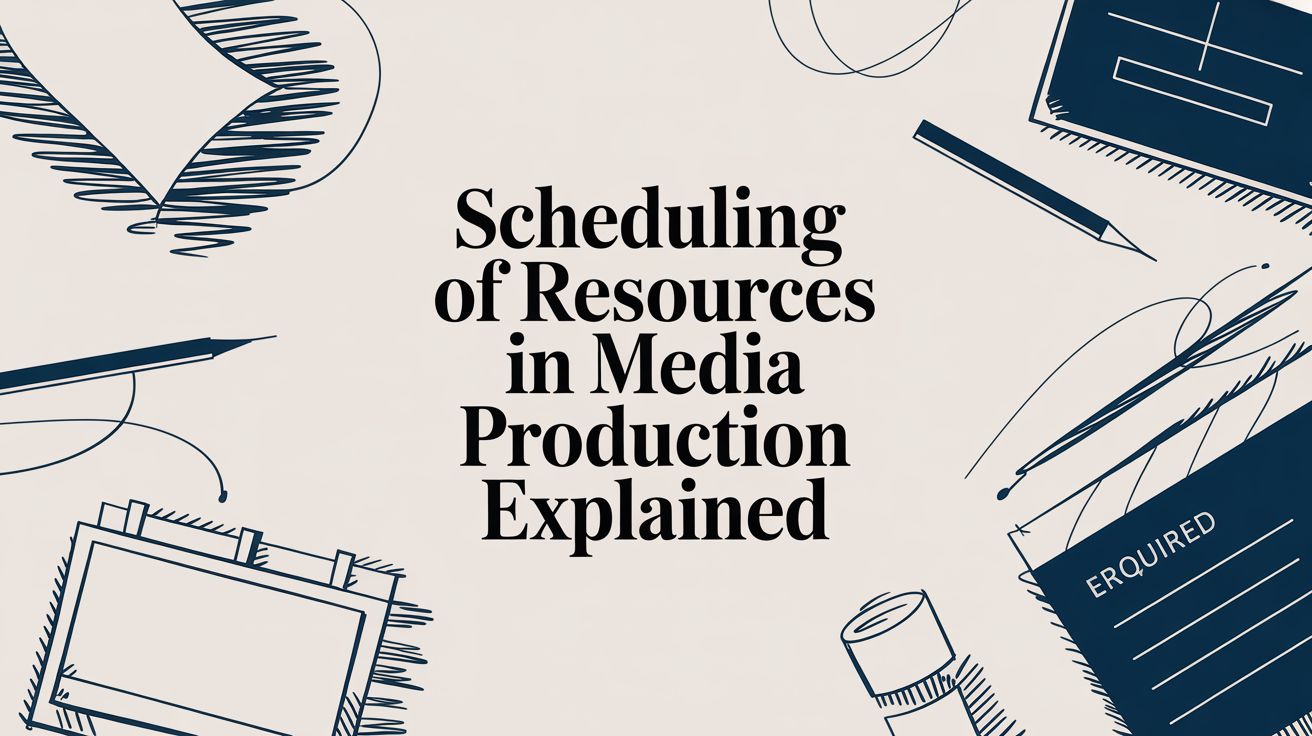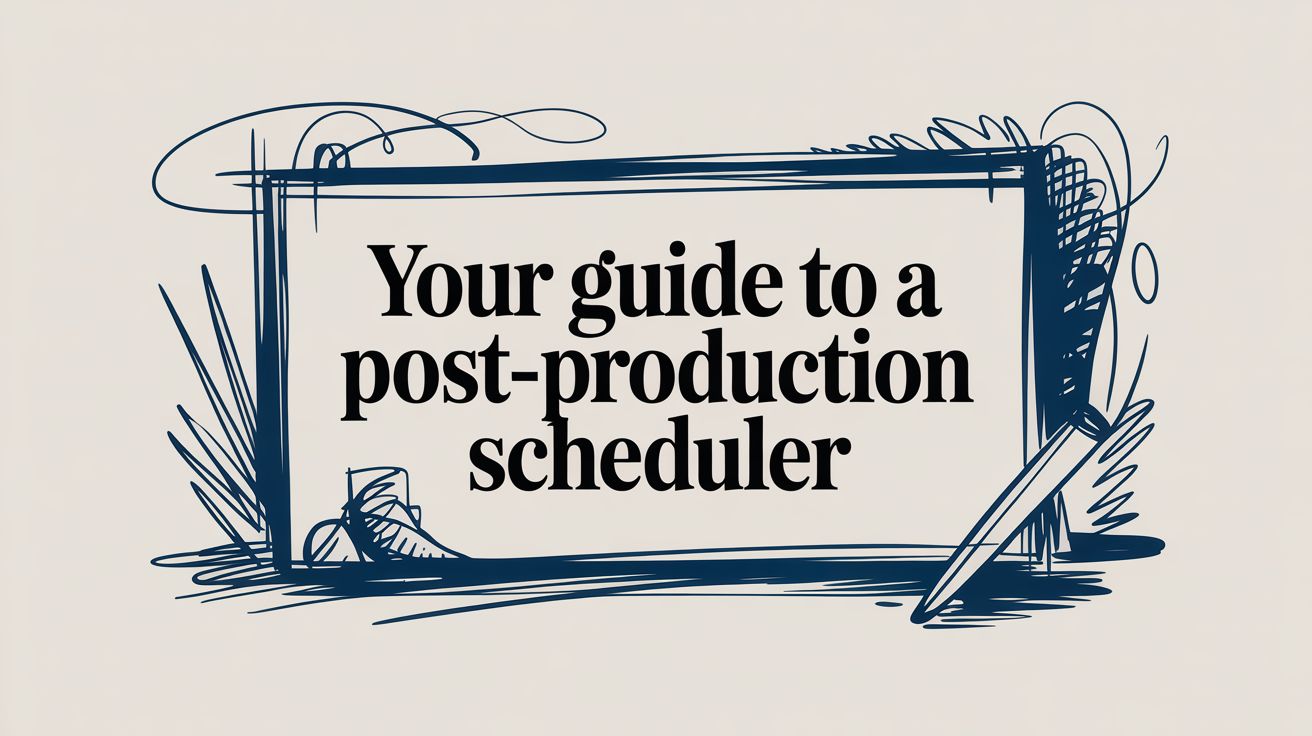The Complete Guide To AI Driven Scheduling For Post Production
The world of post-production is changing quickly. As studios handle more projects with tighter deadlines, traditional scheduling methods are becoming harder to manage. Approximately 70% of movies have integrated some form of AI technology during production, and AI has been used with impressive 90% accuracy in predicting box office success. This guide explores how artificial intelligence (AI) is now being used to make scheduling easier and more accurate in modern post-production studios.
AI-driven scheduling is a new approach that uses data and automation to organize people, equipment, and tasks. It helps teams keep up with complicated workflows and shifting project requirements. Understanding how this technology works can help studios keep projects on track, even when plans change.
What Is AI-Driven Scheduling For Post Production
AI-driven scheduling for post production uses computer programs to automatically plan and organize work. Instead of manually creating schedules with spreadsheets or phone calls, these AI systems analyze project needs and create timelines on their own.
The technology works by looking at information like how long tasks usually take, which people and equipment are available, and when deadlines need to be met. Then it creates a schedule that fits everything together efficiently.
Key parts of AI scheduling include:
- Automated task planning: The system creates schedules without human input
- Resource optimization: It assigns the right people and equipment to each job
- Real-time updates: Schedules change automatically when something unexpected happens
- Predictive analytics: The system warns about potential problems before they occur
This approach differs from traditional scheduling because it can adapt quickly to changes and handle multiple complex projects at the same time.
Core Benefits Of AI-Enhanced Workflow
Time savings represent the biggest immediate benefit. Tasks that used to take scheduling coordinators several hours now complete in minutes. Companies implementing AI scheduling solutions can reduce schedule creation time by up to 80%. Retail businesses with multiple locations have reported that schedules that once took 8-10 hours per week to create can now be generated in under an hour. The AI system automatically assigns editors, equipment, and studio time based on availability and project requirements.
Time savings represent the biggest immediate benefit. Tasks that used to take scheduling coordinators several hours now complete in minutes. The AI system automatically assigns editors, equipment, and studio time based on availability and project requirements. Some entertainment executives, such as Jeff Katzenberg, have publicly speculated that AI could reduce animation production costs by as much as 90%. Industry analysts suggest that AI's efficiency gains in areas like pre-visualization and post-production could potentially reduce production costs by substantial margins.
Time savings represent the biggest immediate benefit. Tasks that used to take scheduling coordinators several hours now complete in minutes. The AI system automatically assigns editors, equipment, and studio time based on availability and project requirements. AI has reduced editing time by up to 40%, allowing films to reach completion faster and at lower costs. The global AI in film market is expected to reach USD 14.1 billion by 2033, growing at a CAGR of 25.7%.
Time savings represent the biggest immediate benefit. Tasks that used to take scheduling coordinators several hours now complete in minutes. The AI system automatically assigns editors, equipment, and studio time based on availability and project requirements. AI tools can reduce video production time by 60-90%, with many businesses reporting around 80% time savings. Organizations implementing AI-powered scheduling solutions typically report time savings of 70-90% compared to manual scheduling processes.
Cost reduction happens because the system prevents common expensive mistakes. It avoids double-booking equipment, reduces overtime by balancing workloads, and identifies when cheaper alternatives exist for specific tasks.
Error prevention comes from automated checking. The system catches scheduling conflicts, missing resources, and deadline problems that humans might overlook when juggling multiple projects.
Studios also gain scalability, meaning they can handle more projects without hiring additional scheduling staff. The AI system manages complexity that would overwhelm traditional methods.
Key Steps To Implement An AI Scheduling Tool
Getting started with AI scheduling involves five main phases that help studios transition smoothly from their current methods.
Assess Project Requirements
First, studios need to understand their current scheduling challenges. This means documenting how scheduling currently works, what problems occur regularly, and what resources the studio has available.
The assessment should cover typical project types, team sizes, equipment inventory, and deadline patterns. Studios often discover inefficiencies they didn't realize existed during this review process.
Select A Secure Scalable Platform
Choosing the right AI scheduling tool requires looking at security features, integration capabilities, and growth potential. Enterprise-grade platforms offer better data protection and can handle larger studios with complex needs.
Security matters because scheduling data includes sensitive information about unreleased projects, staff schedules, and budget details. Look for platforms that use encryption and have proper access controls.
Integrate With Existing Workflows
Most studios already use various software tools for different parts of their work. The AI scheduling system needs to connect with these existing tools through APIs (application programming interfaces), which allow different programs to share information automatically.
Common integrations include email systems, accounting software, and project management tools. This connection prevents staff from having to enter the same information multiple times.
Train Your Team
Staff training covers both how to use the new system and how workflows will change. Some team members might worry about job security or feel overwhelmed by new technology.
Training works best when it includes hands-on practice with real projects and clear explanations of how AI scheduling supports rather than replaces human decision-making.
Monitor And Refine With Data
After implementation, studios track how well the AI scheduling system performs. This includes measuring time savings, error reduction, and user satisfaction.
The system improves over time as it learns from more data about the studio's specific projects and preferences.
Top Features That Transform Scheduling
AI scheduling platforms offer several key capabilities that change how post production studios manage their work.
Real-Time Resource Allocation
The system continuously tracks who and what is available, then automatically assigns resources to tasks as they become free. If an editor finishes a project early, the AI immediately assigns them to the next appropriate task without waiting for manual intervention.
This dynamic allocation prevents downtime and keeps projects moving forward efficiently.
Predictive Task Forecasting
AI systems analyze historical data to predict how long tasks will take and where delays might occur. For example, if color grading typically takes longer on certain types of projects, the system forecasts potential slowdowns and alerts teams in advance.
This forecasting helps studios plan more accurately and avoid last-minute scrambling when problems arise.
Automated Budget Estimations
The system calculates project costs by analyzing resource requirements, timelines, and current rates. It can suggest schedule adjustments that keep costs within budget constraints.
For instance, if certain equipment costs more on specific days, the AI recommends alternative scheduling to reduce expenses.
Addressing Security And Compliance Concerns
AI scheduling systems handle sensitive production data, making security a primary concern for post production studios. Modern platforms use several layers of protection to keep information safe.
Data encryption converts readable information into coded format that only authorized users can access. This protection applies both when data is stored and when it travels between systems.
Access controls limit who can see or modify scheduling information. Different team members get different permission levels based on their roles and responsibilities.
Audit trails record every change made to schedules, showing who made modifications and when they occurred. This tracking helps with accountability and troubleshooting.
Industry compliance features ensure the system meets entertainment industry standards for data handling and privacy protection.
Common Challenges And Practical Solutions
Studios typically encounter three main obstacles when adopting AI scheduling tools.
Data Quality Limitations
AI systems work best with complete, accurate historical data. Studios with incomplete records or inconsistent data entry may see less accurate scheduling recommendations initially.
The solution involves cleaning up existing data and establishing consistent data entry practices going forward. Over time, better data improves AI performance significantly.
Team Adoption Resistance
Some staff members worry that AI tools might replace their jobs or make their work more complicated. This concern is natural when new technology gets introduced.
Open communication about how AI supports rather than replaces human expertise helps address these worries. Providing adequate training and allowing time for adjustment also improves acceptance.
Integration With Legacy Systems
Older software systems may not connect easily with modern AI scheduling tools. This technical challenge can slow down implementation or require additional IT support.
Solutions include using middleware to bridge connections between old and new systems, or gradually migrating to more compatible platforms over time.
Future Outlook Of AI Tools In Post Production
Machine learning algorithms are becoming more sophisticated, leading to better predictions and recommendations. Enhanced collaboration features help human teams and AI systems work together more effectively. Most organizations achieve full ROI within 6-12 months after implementing AI scheduling software. By the 12-month mark, many organizations report ROI ratios of 300-500%, representing a 3-5x return on their initial investment.
Machine learning algorithms are becoming more sophisticated, leading to better predictions and recommendations. Enhanced collaboration features help human teams and AI systems work together more effectively.
Emerging capabilities include:
- Advanced predictive modeling for more accurate timeline forecasting
- Sustainability tracking to monitor and reduce energy consumption
- Cross-platform integration connecting with more post production software tools
These developments point toward AI scheduling becoming a standard part of post production workflows rather than an optional add-on.
Empower Your Studio With AI-Ready Scheduling
AI-driven scheduling represents a significant shift in how post production studios manage their operations. Studios that adopt these tools position themselves to handle increasing project complexity and tighter deadlines more effectively.
The technology works best when implemented thoughtfully, with proper training and realistic expectations about the transition period. Studios built for AI integration from the ground up often see the most dramatic improvements in efficiency and cost management.
Ready to transform your post-production workflows? Book a demo to see how AI-driven scheduling can optimize your studio operations.
Frequently Asked Questions About AI-Driven Scheduling
How do I measure return on investment for AI scheduling software in post production?
Track time savings in schedule creation, reduction in project delays, and improved resource utilization rates. Most studios see measurable ROI within three to six months of implementation.
Does AI scheduling software help with carbon emissions tracking in post production studios?
Many AI scheduling platforms include sustainability features that monitor energy usage across post production workflows and suggest optimizations to reduce carbon footprint.
Can I implement AI scheduling gradually instead of replacing my entire studio system at once?
Most AI scheduling platforms support phased implementation, allowing studios to automate specific workflows first while maintaining existing processes for other projects.

